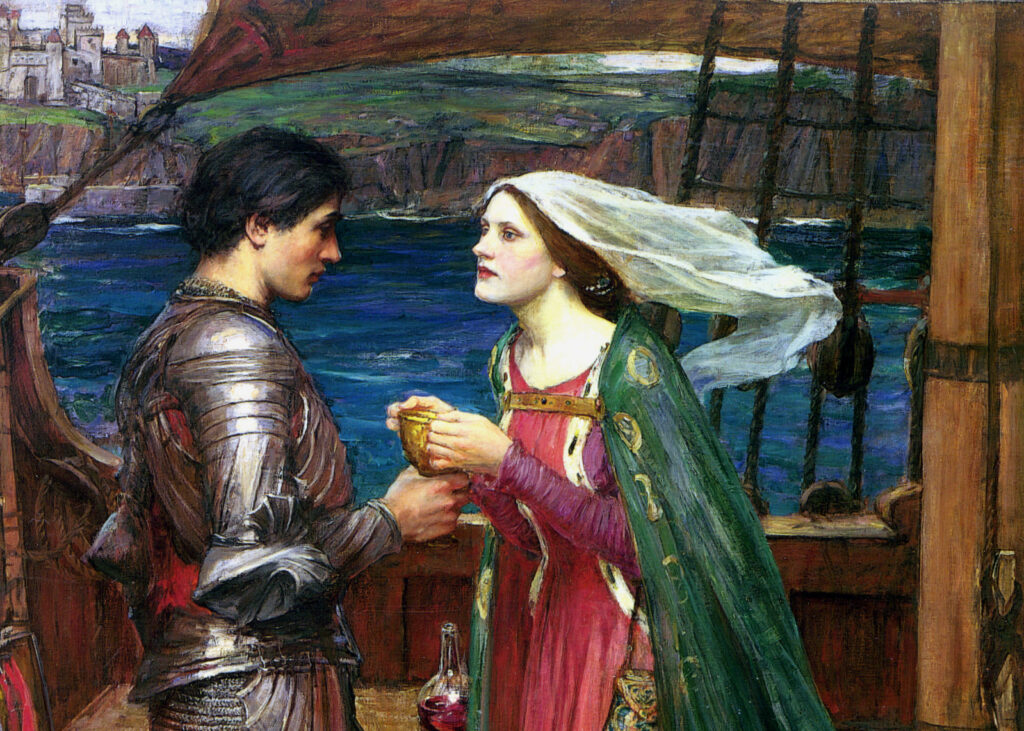Home » Topics / Subgenres » Legend / Myth / Fantasy (Page 2)
Category Archives: Legend / Myth / Fantasy
Njáls Saga
(Njála)
anonymous (Icelandic)
1270-1290
(A sage in medieval Iceland attempts to restore order in the face of bloody vengeance and warrior’s honor)

The mighty deeds of a free people in struggle are frequently represented in timeless literature—such stories will never go stale. Whether tossed on the stormy Mediterranean, afoot in the forests and scrublands of India, or galloping through prairie grasses among stalwart buttes in the American West, there is something deeply inspiring about a small people forging a life in the face of privation, violence, and treachery. We who live in the comfort of civilization can be tempted to think that a reasonably stable government and the rule of law are guaranteed, automatic, assumed. Or, even if we endure corruption, are wary of the tyranny or selfishness of our leaders, or have suffered at the hands of criminals, we are among millions and are likely to see ourselves as puny actors on an immense stage—what can we possibly do?! How fascinating, then, are the tales of those who managed to defend some fragile order amidst a storm of chaos—those whose survival was assured not by the actions of others, whether their venerated ancestors or soldiers on distant front lines, but by themselves: by the wisdom of their own minds, the words that passed through their own lips, and the swords that hung from their own belts. The Icelandic Sagas—the Íslendingasögur—are epic narratives of this very sort. A man in the Age of Saga, so we are told, could cut his own destiny, no matter what coarse fabric sought to hem him in. And a woman could make the best of things by controlling the men. Anyone who wishes to see how this sort of lifestyle could play out can do no better than to read Njáls Saga (or, in the alternative title that is at once a spoiler, the Saga of Burnt Njál). The professionals tend to consider this the greatest and most well-developed of the 40 or so Icelandic Sagas that were written in the 13th-14th centuries. Whatever the critics say, here we certainly find hefty measures of all the most engaging ingredients in that genre: the bloody swinging of swords and thrusting of spears, the uncompromising defense of honor, the defiant challenge of the sea, the tenuous rise of God over the idols and of Law over bloody feuds, the disastrous fruits of pride and envy, the sly instigations of women, the mystic power of prophecy and fate, the iron duty of loyalty, and the deathgrip of revenge!
The Romance of Tristan and Iseult
(Le Roman de Tristan et Iseut)
Joseph Bédier
1900
(A knight and a lady pursue their magical love through bloodshed and sorrow.)

When tales pass through centuries of retellings, they tend to become what of audio media we would call “overproduced”: too many interpreters have slanted the story their various ways, too many embellishments and new episodes have been inserted, too many accommodations and updates have aimed at suiting the fancies of each audience. In the process the story can lose some of its grip on our imagination and our romantic sensibilities. It can be so cobbled and abused that we are left to distill the heart of it as best we can from a variety of sources. The only way such a beautiful old tale could ever be told today in anything like its original form and spirit, would be for three literary virtues to unite: a single author must be simultaneously an expert scholar, a great poet, and above all, modest. Only a scholar will know the history of the work; will be able to distinguish the wheat from the chaff in elements of theme, characterization, and plot; and will sufficiently understand an ancient teller’s perspective so as to effectively reproduce it. And only a great poet will be able to convey this perspective, and the story itself, with convincing unity and supreme skill; expectations of quality and beauty are lofty when we pick up a beloved and popular story. And finally, many a great poet and scholar will have great pride as well, in which case there will be too much of the writer and not enough of the legend in the text. Granted, we love our authors’ egos when it is them we want to see; but if the aim is to represent something of the original (or at least old) character of a romance, an author must exercise admirable self-control. We can thank Joseph Bédier for being this author in all respects for the legend of Tristan & Iseult.


